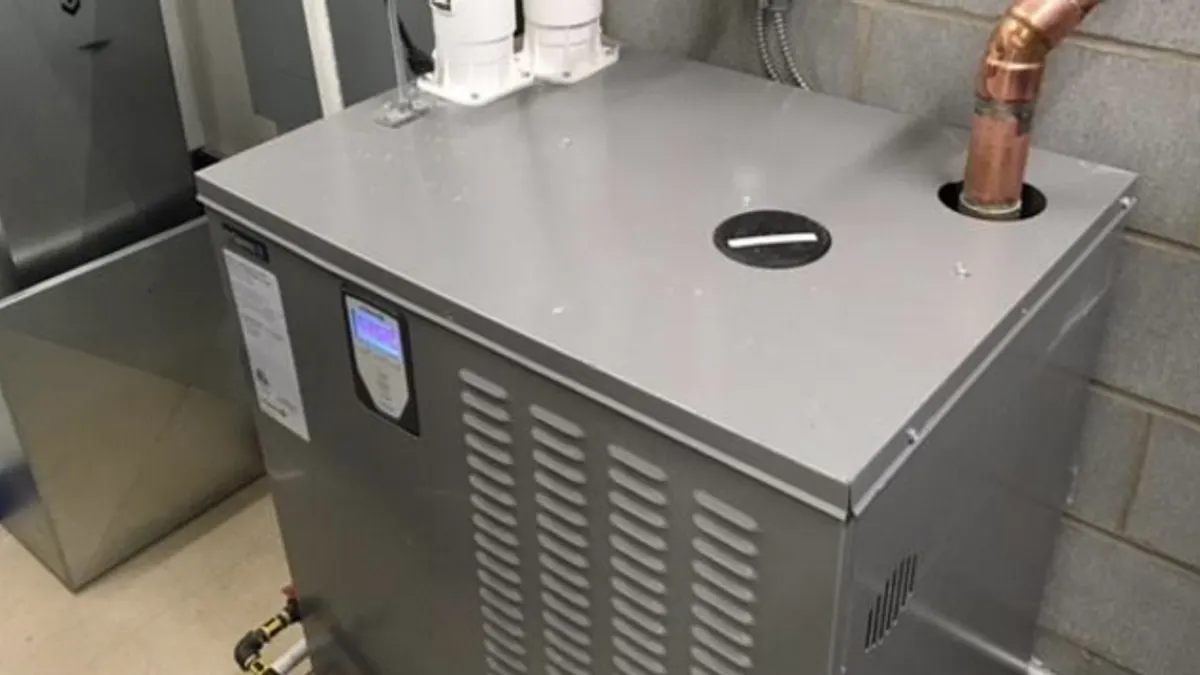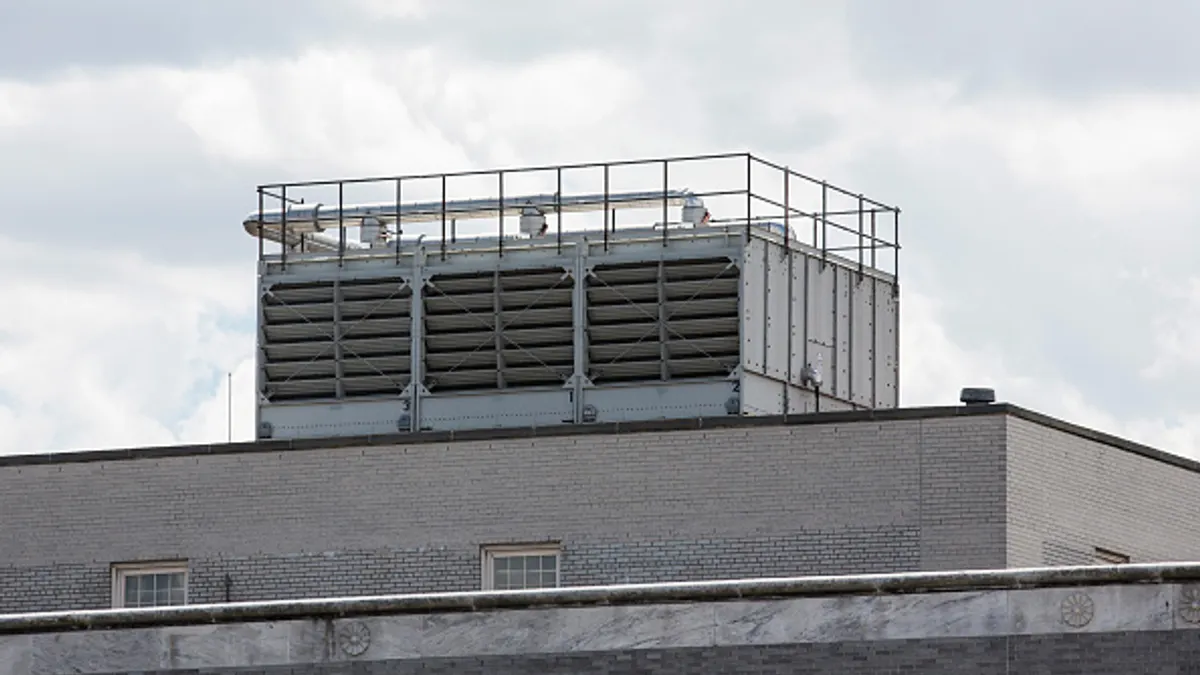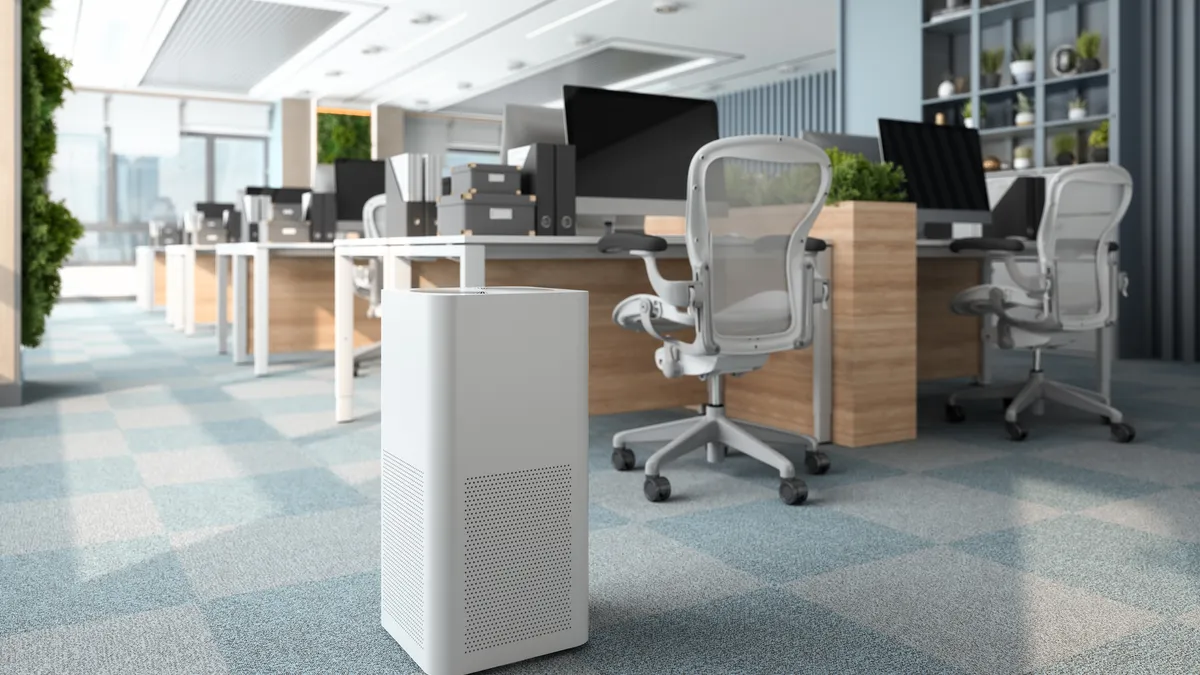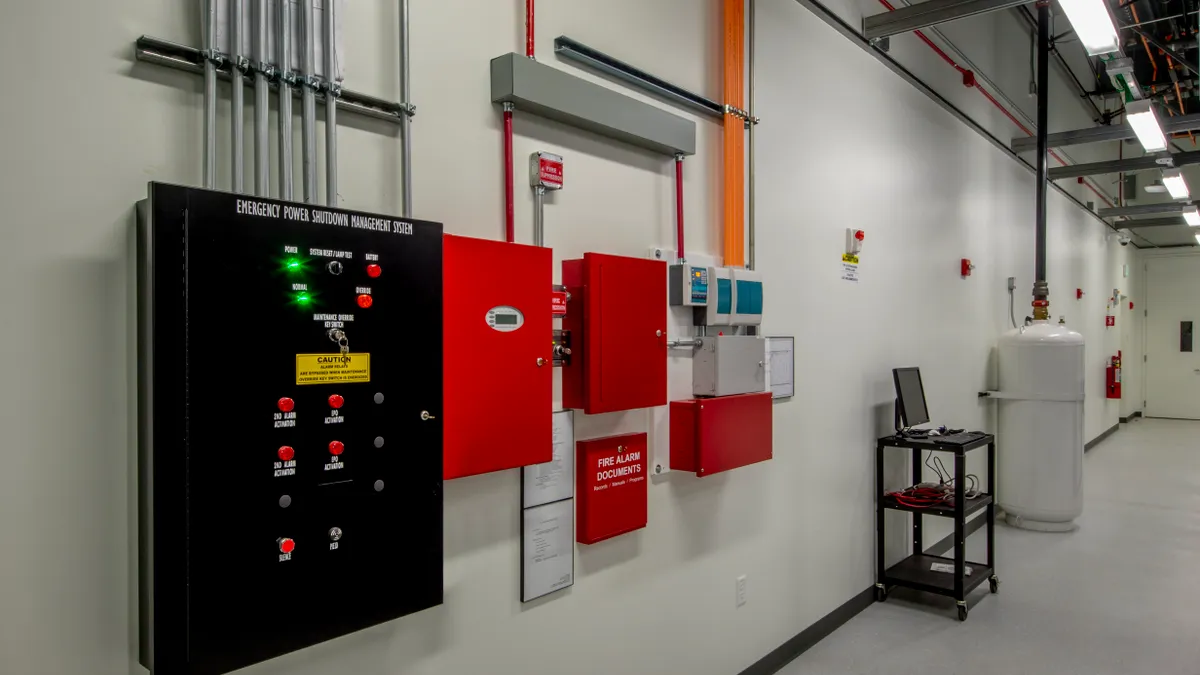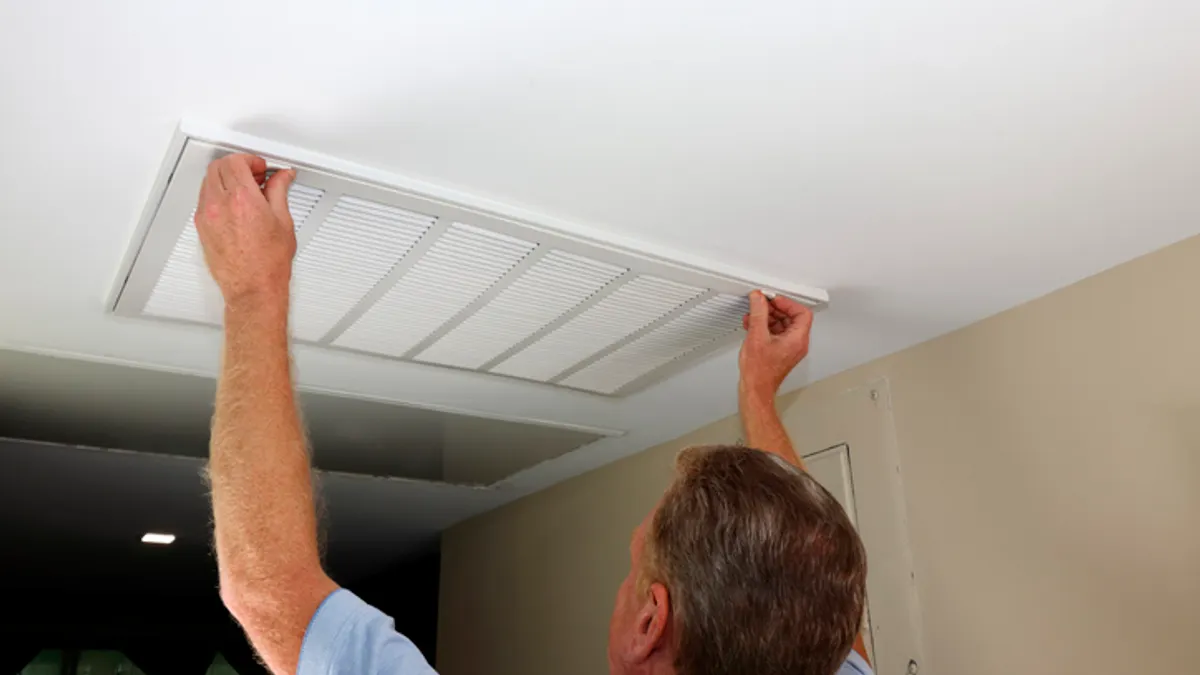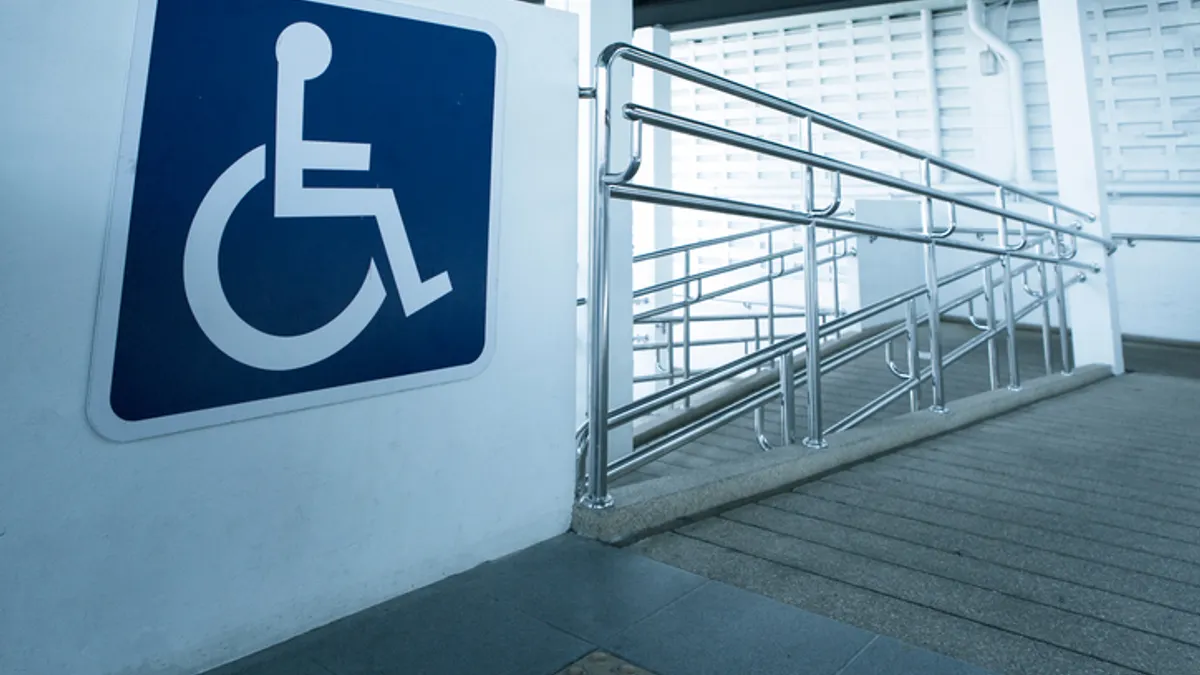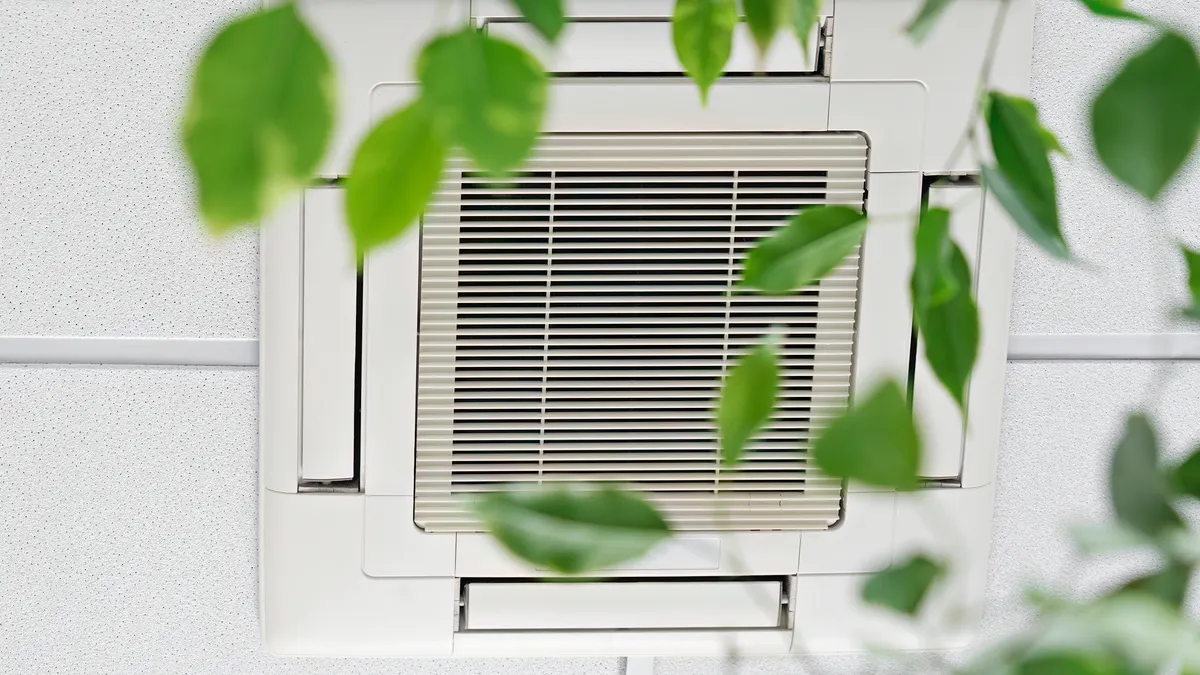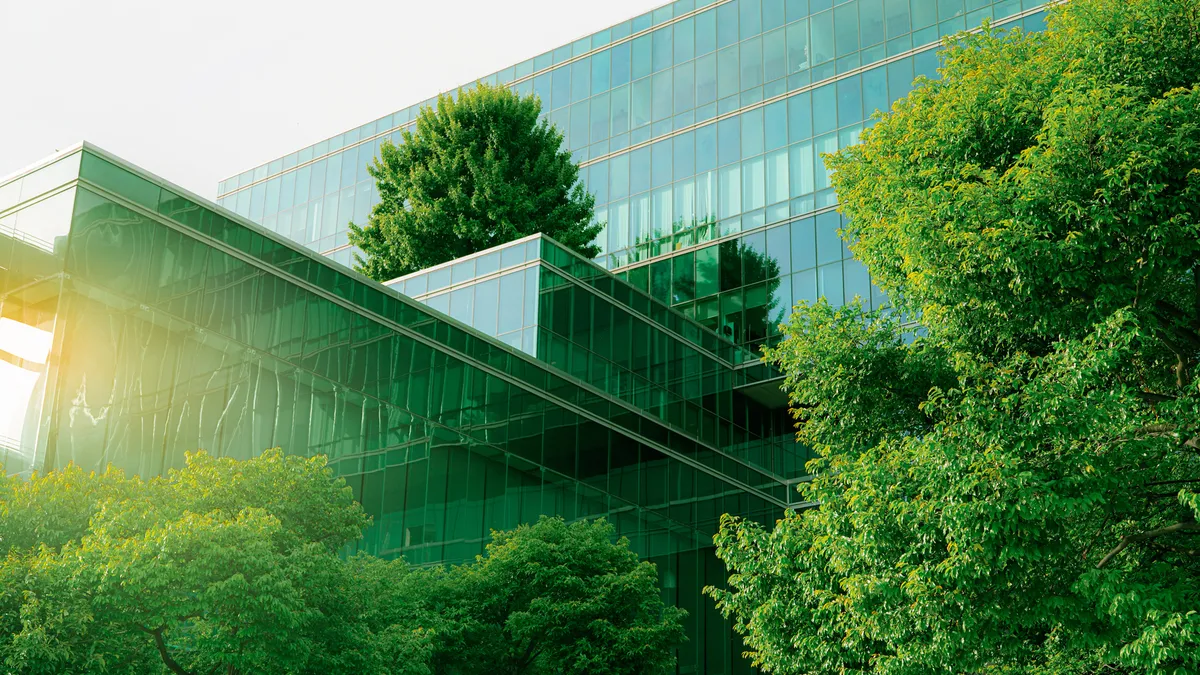Humidification could help facility managers improve their organization’s bottom line by reducing absenteeism, says an engineer whose company manufactures humidification systems.
Infectious agents contained within the fine water droplets released when someone sneezes or coughs won’t spread as far in indoor environments when the humidity levels are relatively high, reducing the chance of people falling ill, David Schwaller, senior application engineer at DriSteem, told Facilities Dive.
That’s because infectious agents are lighter than the water droplets in which they’re carried. The longer the water droplets survive, the greater the likelihood the infectious agents will fall to the ground, where they cause less harm than if they were to stay suspended in the air, Schwaller said.
In relatively dry rooms, the water droplets evaporate more quickly, leaving the infectious agents suspended longer in air, where they can spread throughout the room.
“Viruses are very small,” he said. “They stay airborne and … move across spaces from very long distances. If you have a properly humidified space, the water droplets don’t evaporate as quickly, so the [viruses fall] to the ground and other places so they don’t get ingested by the breathing process.”
People’s nasal cavities and sinuses, if they're dried out, tend to be more susceptible to infection from airborne pathogens as well, he said. “That’s how those viruses and bacteria get into your bloodstream,” he said.
The sweet spot in the typical indoor environment is 30% to 40% relative humidity, Schwaller said. Specialized environments, like medical facilities and some manufacturing plants, can require higher humidity levels.
Hospital burn units and pharmacies are examples, he said. “The pharmacy … has a fairly high humidification requirement because they’re compounding there and doing things that can affect the weight of the medicines,” he said. “So there are strict guidelines based on room purpose.”
Humidity is also important in manufacturing processes because dry air can cause static charges that can damage fine equipment, like the machinery used in semiconductor manufacturing. In printing plants, dry air can keep the ink from spreading correctly on paper. “Paper holds moisture, and it’s important to keep that at the right level,” he said.
Humidity can also ruin furniture over time, an important consideration in offices. “Wood is the most susceptible,” he said. “You’ll see cracking in nicer wood trim and equipment, and [degradation in] carpet and curtains — things like that. If you get very high humidity in the summer and low in the winter, the materials just start breaking down.”
Controlling humidity
The approach facility managers take to control humidification depends on the size of the space and whether humidity control is important in the entire building or just some of the rooms, Schwaller said. In a complex environment like a hospital, where humidity requirements vary according to a room’s purpose, facility managers take a layered approach.
“Typically they’ll deal with it on a central air handling level, bring the building up to the minimum, and then as needed for each procedure room, have a standard humidifier that will elevate the level as needed to get to the right RH for those spaces,” he said.
For a typical office, humidification can be added to the existing air handling system. “Most of the time you’re putting [the vapor] into the supply air after it’s conditioned or heated and filtered by air handling units,” he said, “and then that supply air distributes the humidity as needed in the space.”
In smaller offices, the humidity can be added outside the air handling system. “It can be mounted on the wall with the fan pack above it and you just blow the steam into the space,” he said.
The amount of service the system requires depends on the mineral content in the water. If there’s a lot of minerality, facility managers can expect to service the systems every three to six months. That means using a cleaning agent to scour the mineral build-up from the equipment or, if it’s a smaller unit, replacing the disposable canister every few months.
Treating the water before it goes into the system so there’s less mineral build-up in the equipment can reduce the need for cleaning, Schwaller said.
Using a water softener before the humidifier is “a fairly inexpensive way to change the makeup of the water and make the minerals that are stuck in the humidifier soft and sandy versus the hard rock that you get with calcium and magnesium in the water,” he said, which can mitigate the need for cleaning.



